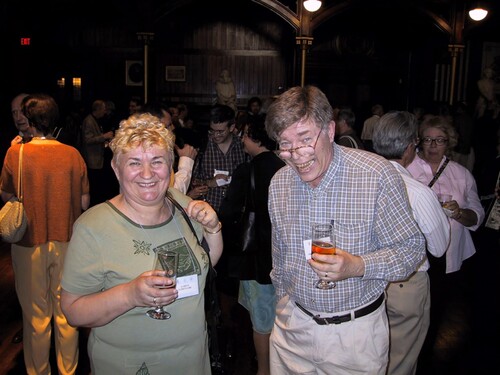Douglas Sims (7 February 1945–19 December 2023) died in December 2023 of burns suffered in a fire at his home in November. With this tragic death, our field lost one of its most dedicated and single-minded practitioners. With no academic or scholarly posting, Doug made ends meet by driving a cab in New York City and teaching English to new Americans, many of them from Russia and Ukraine. In his ‘spare’ time he conducted detailed investigations of topics in sixteenth-century cartography and, particularly, into the work of Giacomo Gastaldi. He was a most conscientious and careful bibliographer, and many others in the field benefitted from his mastery of bibliographical minutiae. Few of his labors made it into print, although a kind of samizdat made possible a wider distribution of at least four pieces: the ‘publication’ of a few photocopies of an early version of his magnum opus on Gastaldi in 2003 and brief notices of two sixteenth-century works.Footnote1 He also took it on himself to document the first sixteen International Conferences on the History of Cartography (ICHC).Footnote2 As far as I can tell, his sole work to appear in traditional dress was his study of Leo Bagrow’s early history and bibliography of the history of cartography published in the middle of the Russian Revolution.Footnote3 Doug continued to work on the 2003 Gastaldi MS for two more decades; the version left at the time of his death runs to 536 pages, including a 300-page cartobibliography of 124 maps by Gastaldi (fifteen more than any other list). It is hoped that this important work can be made generally available in the coming months.
Douglas William Sims was born on 7 February 1945 in Kansas City, Missouri. From early in life he was fascinated by maps and even drew, page-by-page on notebook sheets, a wall map of Kansas City as discovered by himself on his bicycle. He graduated from Westport High School in 1964 and served in the US Army from 1966 to 1968, including a tour of duty in Vietnam. Only slowly finding his vocation, he finally earned a BA in Slavic Languages from the University of Kansas in 1984. Two years later he moved to New York City, principally so he could speak Russian every day as a taxi driver. He operated a private school in Brooklyn where he taught English to Russian immigrants for a number of years. While driving his taxi one day in the 1980s, he met the love of his life, Elzbieta (Ewa) Orzechowska, shortly after she had arrived in New York from Poland. He noticed a woman dressed in what looked like a spacesuit who looked rather confused, so he asked if he could help her find an address. Ewa had taken a job removing asbestos from old buildings and was in her protective clothing.
Doug was a fixture at ICHCs, usually with Ewa at his side. His personality was effervescent and he contributed to many discussions at conferences on a wide range of topics. He could speak with authority and eloquence on such diverse subjects as the determination of longitude in the sixteenth century, the Strait of Anian (which gets a long chapter in his study of Gastaldi), and just about any kind of classical music. He brought to my attention a particular performance of Rossini’s ‘Stabat Mater’ that continues to haunt me. Alexy Postnikov recalls that:
Long ago, when I won my first Newberry Library short term fellowship I came to the USA through New York. Doug met me at the airport in his old Ford and put on Pergolesi’s Stabat Mater, which happens to be one of my most beloved oratories … So from this night in his car and then in his modest studio on Brighton Beach, classical music and old maps became our mutual love.Footnote4
Doug is survived by Ewa, step-daughters Kasia and Bozena, his sisters Diane and Margot, and four nieces. His ashes were interred at Ewa's family plot in Warsaw, Poland in January 2024.
Notes
1 Giacomo Gastaldi and the four continents (Brooklyn, NY: printed by the author, 2003), 258 leaves, [24] leaves of plates; A Lafrerian atlas in the Czartoryski Library in Cracow, Poland (Brooklyn, NY: printed by the author, 1993), 9 leaves; A 1528 world map by Francesco Maurolico previously unnoticed by historians of cartography (Brooklyn, NY: printed by the author, 2019), 9 leaves.
2 The International Conferences on the History of Cartography: a short historical survey and a bibliography of papers (Brooklyn, NY: printed by the author, 1995), 36 pages. This essay has now been published online, together with additions by Peter van der Krogt and Marissa Griffioen bringing the story up to Bucharest in 2022, ‘A Short History and a Survey of the Conferences. Compiled by Douglas W. Sims (1964-1995) and Peter van der Krogt (since 1997),’ Explokart, https://explokart.eu/ichc/.
3 Douglas W. Sims, ‘Leo Bagrow's forgotten early survey of the development of cartographic historiography,’ Imago Mundi 43, no. 1 (1991): 92-99, https://doi.org/10.1080/0308569910859272.
4 Alexei Postnikov, email to Robert Karrow, 5 January 2024.

